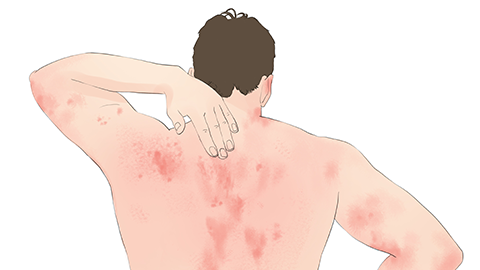What are the symptoms of scabies?
Under normal circumstances, scabies patients may experience symptoms such as severe itching at night, burrow-like skin rashes, papulovesicular eruptions in the finger webs, skin lesions in the axillae and groin, and signs of secondary infection. Detailed analysis is as follows:
1. Severe Itching at Night
Itching is the most typical symptom of scabies and tends to worsen significantly at night. This is because the scabies mites are more active at night, digging tunnels in the skin, laying eggs, and secreting excretions, all of which stimulate the skin's nerve endings more intensely. As a result, patients often find it difficult to sleep and may scratch frequently, further damaging the skin.

2. Burrow-like Skin Rashes
The scabies mites dig long, narrow tunnels in the epidermal layer of the skin. These rashes appear as grayish-white or light black fine lines, approximately 0.5-1 cm in length, with small vesicles or papules often present at the ends. These rashes commonly occur in thin and tender areas of skin such as the finger webs and inner wrists. They serve as direct evidence of mite infestation and aid in diagnosis.
3. Papules and Vesicles in the Finger Webs
The finger webs are among the most common sites for scabies mite infestation. Discrete papules or vesicles the size of pinheads, often pale red or skin-colored, are typically observed. The papules are firm in texture, and the vesicles contain clear fluid. Patients may experience mild itching or a pricking sensation upon touch or pressure. Scratching can cause the vesicles to rupture, leading to local skin redness and exudation.
4. Skin Lesions in the Axillae and Groin
The thin and tender skin in areas such as the axillae, groin, and under the breasts is also prone to scabies infestation. These areas may develop clusters of small red papules or papulovesicles. Due to frequent friction in these areas, the lesions may coalesce into irregular erythematous patches. Scratching may lead to epidermal peeling and increase the risk of infection.
5. Signs of Secondary Infection
If patients continuously scratch due to itching, leading to skin damage, bacteria may easily invade and cause secondary infections. Symptoms such as localized redness, swelling, pustules, and crust formation may appear. In severe cases, pain, pus discharge, and even lymphadenopathy may occur. These infections can worsen skin damage and prolong recovery time, requiring prompt intervention and treatment.
In addition, similar skin lesions may also be found on the wrists, elbows, buttocks, and other areas in patients with scabies. It is also important to avoid sharing clothing or bedding with others in daily life, and to seek medical attention promptly upon noticing symptoms to prevent the spread of the disease.








